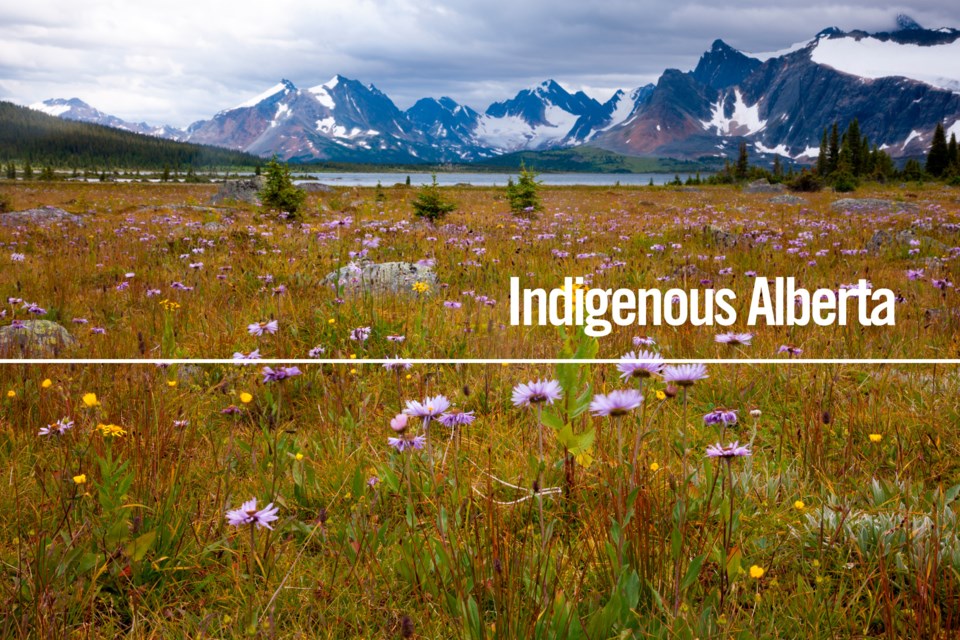It has been a tough time for Canada’s Indigenous people. The discovery of the remains of 215 Indigenous children buried in unmarked graves in Kamloops, B.C., sent shockwaves across the nation. Many people mourned the loss. The discovery has renewed the conversation about the impact of residential schools on the Indigenous community and has sparked outrage from coast to coast.
In light of the Kamloops discovery, today – National Indigenous Peoples Day – may take on a different meaning for both Indigenous and non-Indigenous people who choose to honour it this year.
The very land on which this commemoration of the 25th National Indigenous Peoples Day is written is Treaty 6 territory – the ancestral grounds of the Cree, Dene, Blackfoot, Saulteaux, Nakota Sioux, and Metis.
National Indigenous Peoples Day started in 1996. It was brought to be after tensions between Indigenous and non-Indigenous people reached a boiling point during the Oka Crisis in 1990 and the Ipperwash Crisis in 1995.
These events triggered the Sacred Assembly, a meeting of both Indigenous and non-Indigenous spiritual leaders led by Elijah Harper, which suggested that Canada establish a day of recognition for Indigenous cultures. This was accepted by the federal government and, on the 21st of June 1996, the first-ever National Aborginal Peoples Day was established. It was renamed National Indigenous Peoples Day in 2017.
During a normal year, Edmonton’s Bent Arrow Traditional Healing Society would put on a huge gathering for National Indigenous Peoples Day, but with the pandemic still causing problems, the organization decided to move things online for the second straight year.
“We usually have a really big celebration on National Indigenous Peoples Day and we have food, songs, stories, games, and all kinds of things,” said Bent Arrow executive director Cheryl Whiskeyjack. “This is our second year having National Indigenous Peoples Day during a pandemic. Last year we were able to do an online event and we are going to do another online event this year.”
This year’s event will be much more streamlined. The team has had more than a year to get used to online tools, and Whiskeyjack thinks this familiarity will be able to make this year’s event that much more enjoyable.
“All of us have gotten a lot more savvy with the virtual platforms,” said Whiskeyjack. “It’ll be similar to what we would do if we had an in-person event, so we will have songs and stories. It’ll be basically everything but the food.”
“Storytellers, songs, we will be doing dance demonstrations and things like that.”
Bent Arrow first opened in 1994 and is dedicated to helping Indigenous youth and families grow spiritually, mentally, and physically. The organization offers an array of services, from teaching cultural practices to providing resources to helping people find employment.
“We have about 18 programs and services that primarily serve urban Indigenous folks in Edmonton and area from babies all the way up to seniors in the areas of employment, housing, working with families, mentoring, services to newcomers, and we do a lot of work with children’s services,” said Whiskyjack.
As for the tragedy many are still mourning, Whiskeyjack said Bent Arrow is trying to use this moment as an opportunity to teach people about the struggles of Indigenous peoples. The discovery has garnered widespread media attention that has brought the issue of residential schools to the minds of people who might not have heard about them before.
“One of the things that is important to me is to use this as an opportunity talk about it ... It isn’t new to our community, but I just think seeing it on the (news) ticker on your social media platforms is really putting it in front of a lot of Canadians’ faces,” said Whiskeyjack. “It’s an opportunity to have those discussions and talk about what this means, where it comes from, what are the dots you can connect to the current things we are seeing in our Indigenous community today.
“I’m telling our staff to use it as an opportunity to engage people in a really good conversation about it. One thing we have seen is a rise in people donating to our organization, and so we are having discussions about how we can take people’s donations and turn (those) into some kind of movement out in the community in a good way.”
One of these movements includes a partnership with schools to put on a bigger orange shirt day for students to participate in. The colour orange has been connected to the idea of reconciliation in Canada and has grown into one of the biggest symbols of the movement.
Those interested in attending Bent Arrow’s National Indigenous Peoples Day celebrations can click HERE to visit their Facebook page and watch it via Facebook Live.
Preston Hodgkinson is a freelance writer and regular contributor to Great West Newspapers. This story was funded by the Google News Initiative.



